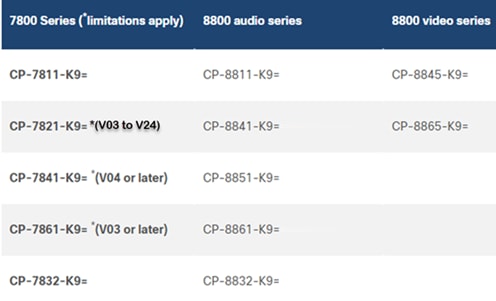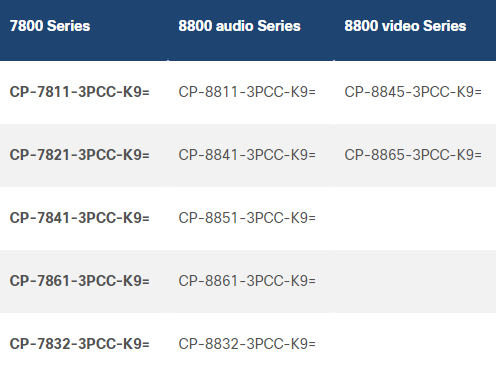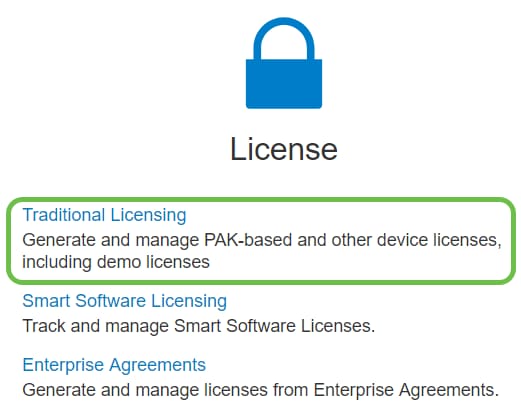Conversion of Enterprise Phones to MPP or Vice-Versa
Available Languages
Objective
This article will provide an overview of Cisco phones as well as explain the basic first steps for a one-time conversion from a Cisco Unified IP Phone to a Multi-platform phone (MPP) or vice-versa. Consider this a little introduction to get you headed in the right direction. An alternate explanation that walks you through the entire process can be found at Cloud Upgrader.
Click on this link if you want to Convert an Enterprise Phone to Use Webex Calling.
Introduction
If you cannot get your new IP phone to register correctly, you may have purchased the wrong model for your business. If that is the case, you should contact your provider to exchange it for the correct one. If returning is not an option, you can do a one-time conversion from Enterprise to MPP or vice-versa on some models.
Read on if you would like to learn the similarities and differences between these two platforms. Otherwise, click here to go directly to the eligibility requirements.
Both Cisco Multiplatform Phones (MPP) and Cisco Unified IP Phones provide Voice over Internet Protocol (VoIP) communication.
MPP phones require either service from an Internet Telephony Service Provider (ITSP) or an IP Private Branch Exchange (PBX) call control server. WebEx Calling, Ring Central, and Verizon are examples of an ITSP. Some examples of IP PBX services that work with Cisco MPP phones include, Asterisk, Centile, and Metaswitch platforms.
A Cisco Unified IP Phone is intended for use exclusively with a Cisco Unified Communications Manager (CUCM), which is an internal call manager. Only an Enterprise business, a large company, would purchase a CUCM, as it would be cost prohibitive for a small or medium size business.
A phone intended for use with a CUCM cannot register with an outside ITSP or IP PBX. They are built to interact with the internal CUCM only. In that same regard, an MPP phone cannot be used with a CUCM.
To learn more about Cisco phones, check out Compare & Contrast: Cisco IP MPP Phones & Cisco Unified IP Phones
Table of Contents
Eligible Models for Conversion
Eligible Models for Conversion
These models are accurate as of the published date for this article, but this may change over time. Cloud Upgrader would be the place to reference for the most current list.
Cisco Unified IP Phone Models available for a One-Time conversion to MPP Phone:
Note: The 7821, 7841, and 7861 must be version 3 or later and the 7841 must be version 4 or later or they are not eligible to migrate to a Cisco Unified IP Phone.
MPP Phone Models Available for a One-Time Conversion to a Cisco Unified IP Phone:
Note: The 8821 and 8831 are not eligible to migrate to MPP.
Upgrade to the Latest Firmware
Before a conversion can take place, the phones need the latest firmware version installed.
Upgrade Cisco Unified IP Phones:
Upgrade IP Phone Firmware Individually (on a phone that was originally made for use with a CUCM)
Upgrade MPP Phones:
Traditional Licensing
If your phone is eligible for conversion and you have upgraded to the latest firmware, you then need to purchase a license for each phone. It is important to note that this is not applicable to newly purchased phones.
For migrating enterprise phones to MPP firmware for use with any call control other than Webex Calling, you need to acquire regular licenses with following SKUs based on what type of phone models you have.
L-CP-E2M-78XX-CNV
L-CP-E2M-88XX-CNV
To migrate an enterprise phone to MPP for a third-party call controller (not Webex), you need to acquire regular licenses with the following SKUs
You will order one of the following:
L-CP-M2E-88XX-CNV
L-CP-M2E-88XX-CNV
E2M signifies that the license is intended for Enterprise to MPP. M2E signifies a conversion from MPP to Enterprise. Pay attention to the coding to make sure you purchase the correct one.
License SKU legend:
E2M - Enterprise (CUCM/HCS) to MPP
M2E – MPP to Enterprise (CUCM/HCS)
Once you order a license, you will receive an email with a claim certificate sent to the email address that was entered at the time the order was placed. The claim certificate will include a Product Authorization Key (PAK) with a quantity. The email will also include a link to download the transition firmware.
License Example 1. Towards the bottom of the email you will see the SKU, description, and quantity of licenses that was ordered. Additionally, you can click on the link Register Claim Certificates to have the licenses loaded into your license and registration portal.
License Example 2. For this certificate example, the part number, product description, and the quantity ordered are listed. Additionally, there is a link to download the required transition firmware. The PAK is also shown.
Traditional Account
If you have a traditional account, you would navigate to Cisco Software. Under License, select Traditional Licensing.
If you are feeling confident that you would like to do this conversion, head over to Cloud Upgrader to complete the process.
Conclusion
Nice work figuring out your conversion options, you are now on your way to a solution that is right for your business.
If you would like more guidance with this process, check out the following guides:
Revision History
| Revision | Publish Date | Comments |
|---|---|---|
5.0 |
18-Nov-2024 |
Models and licensing information have been updated. |
4.0 |
04-Jun-2023 |
Eligible models were adjusted and a note added about new phones not being eligible. |
3.0 |
02-Nov-2022 |
License information has been updated. |
2.0 |
24-Oct-2022 |
Link to Enterprise to MPP for Webex Calling was added. |
1.0 |
26-Aug-2019 |
Initial Release |
Contact Cisco
- Open a Support Case

- (Requires a Cisco Service Contract)






 Feedback
Feedback